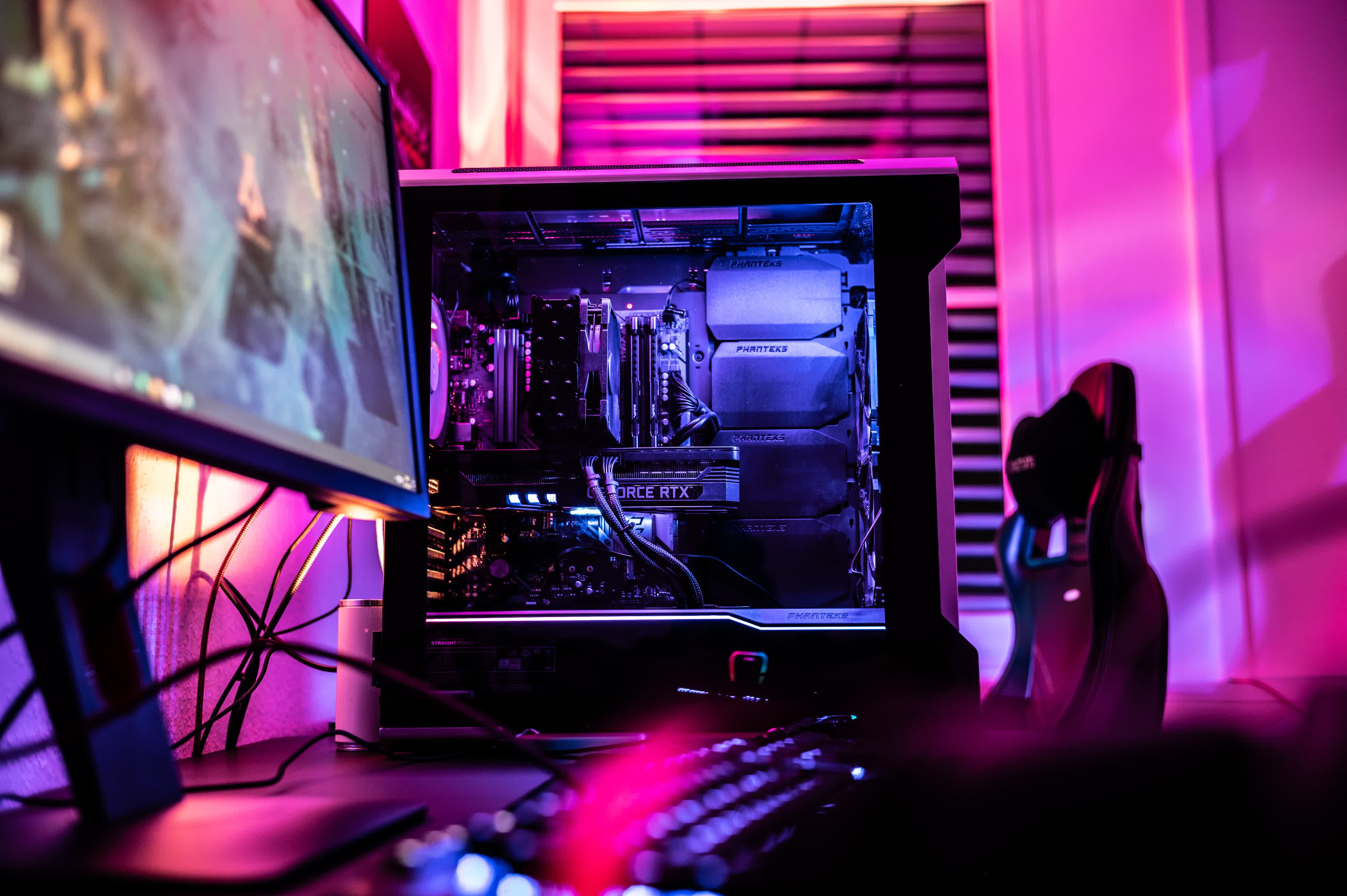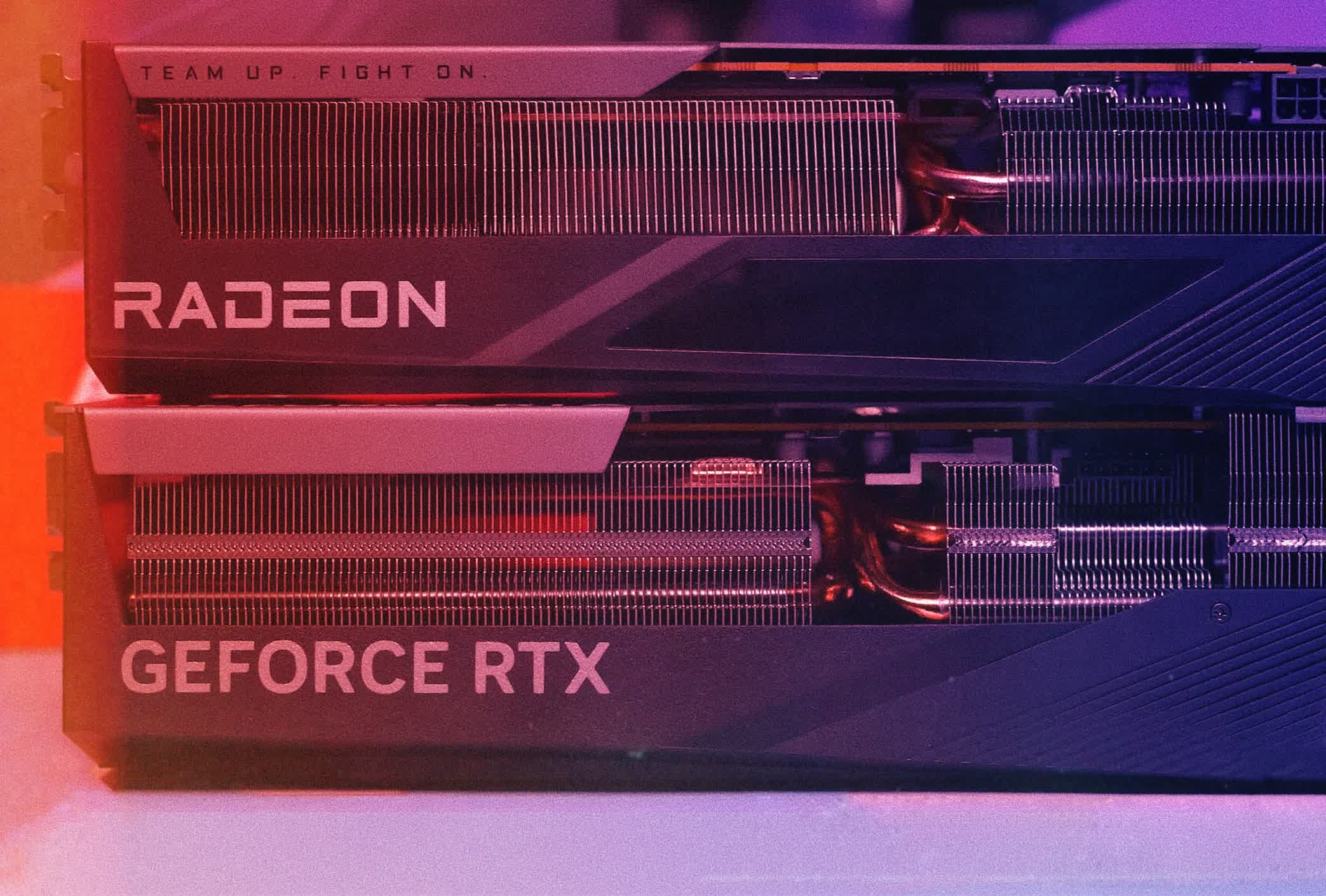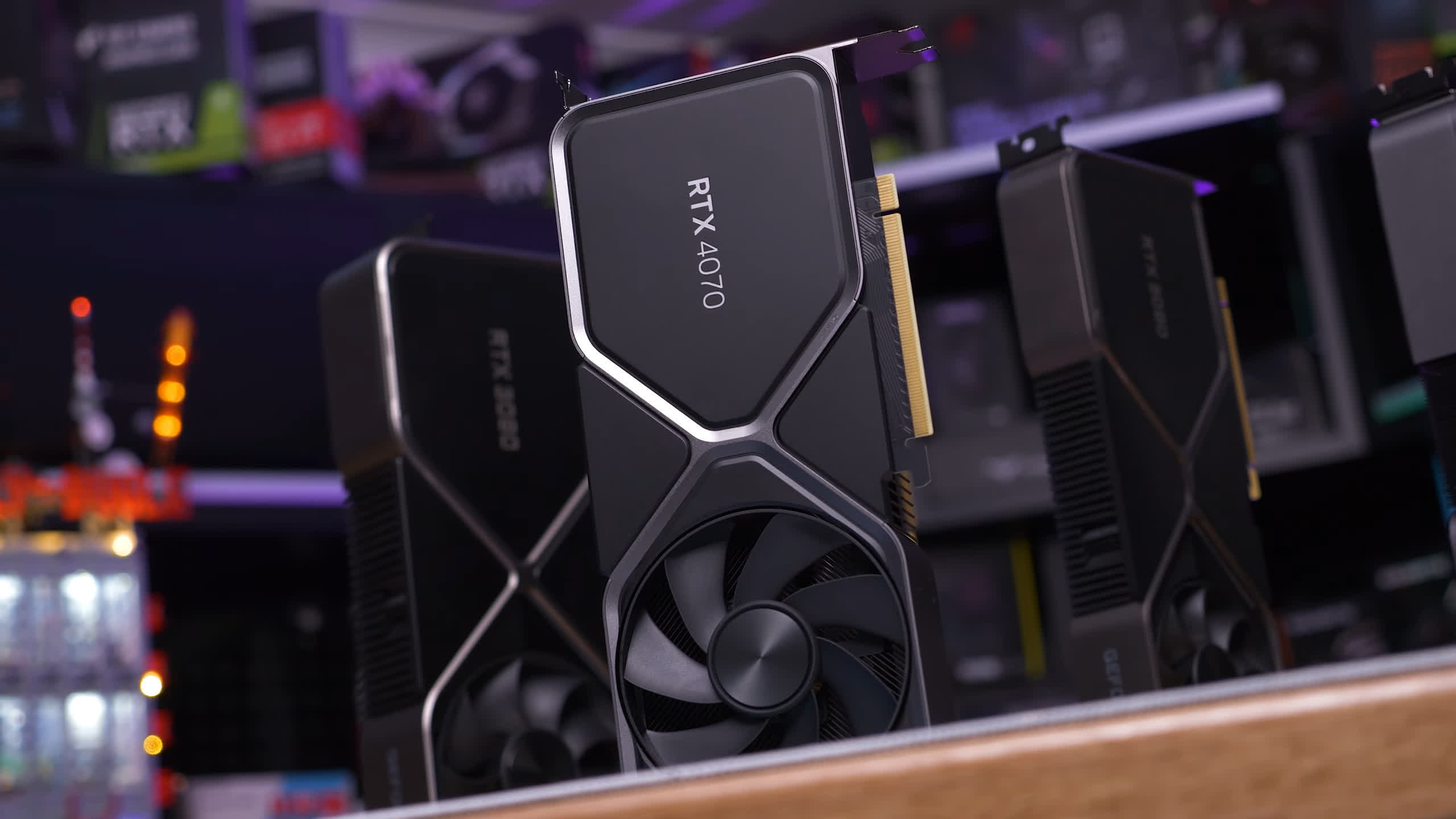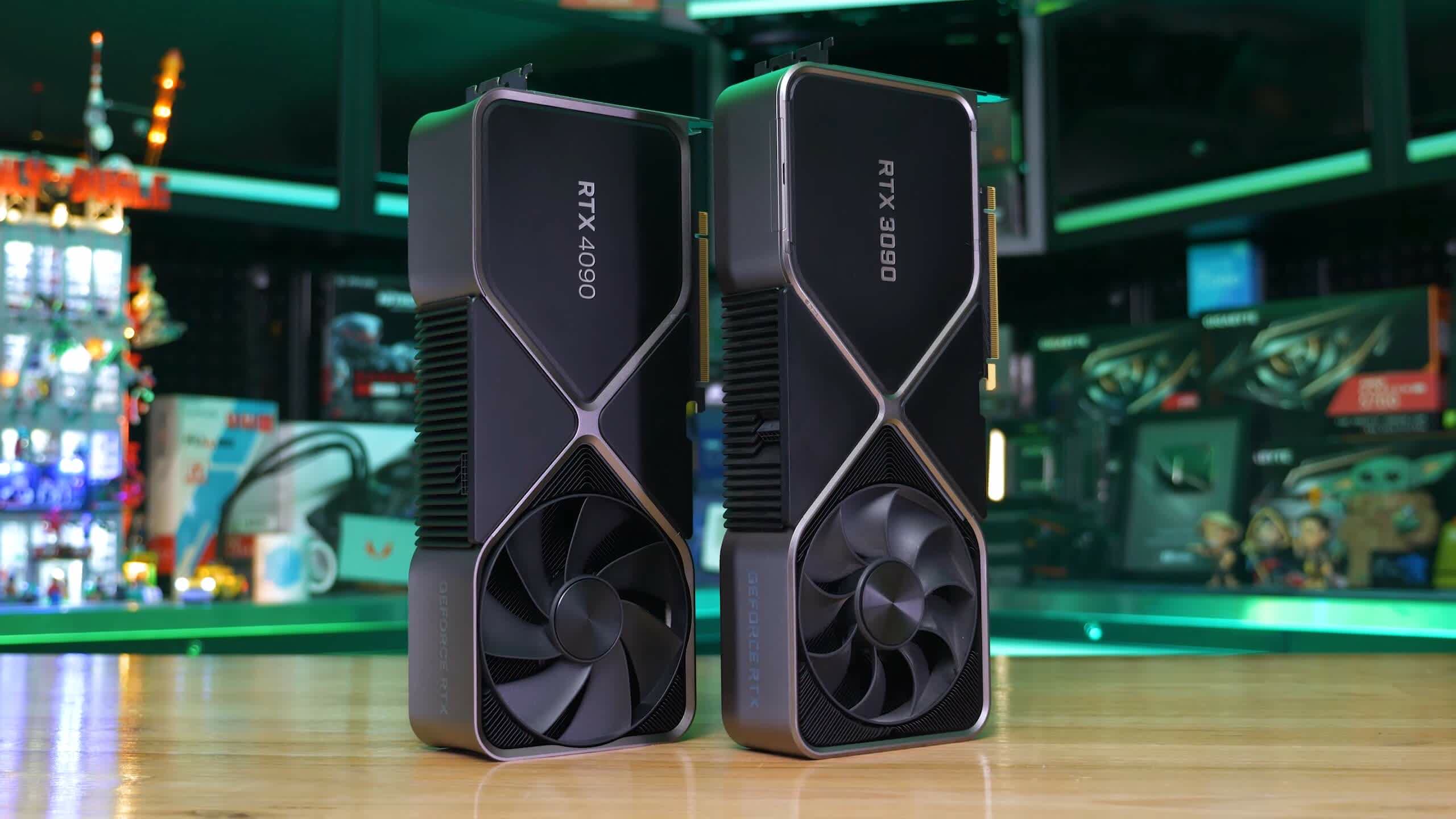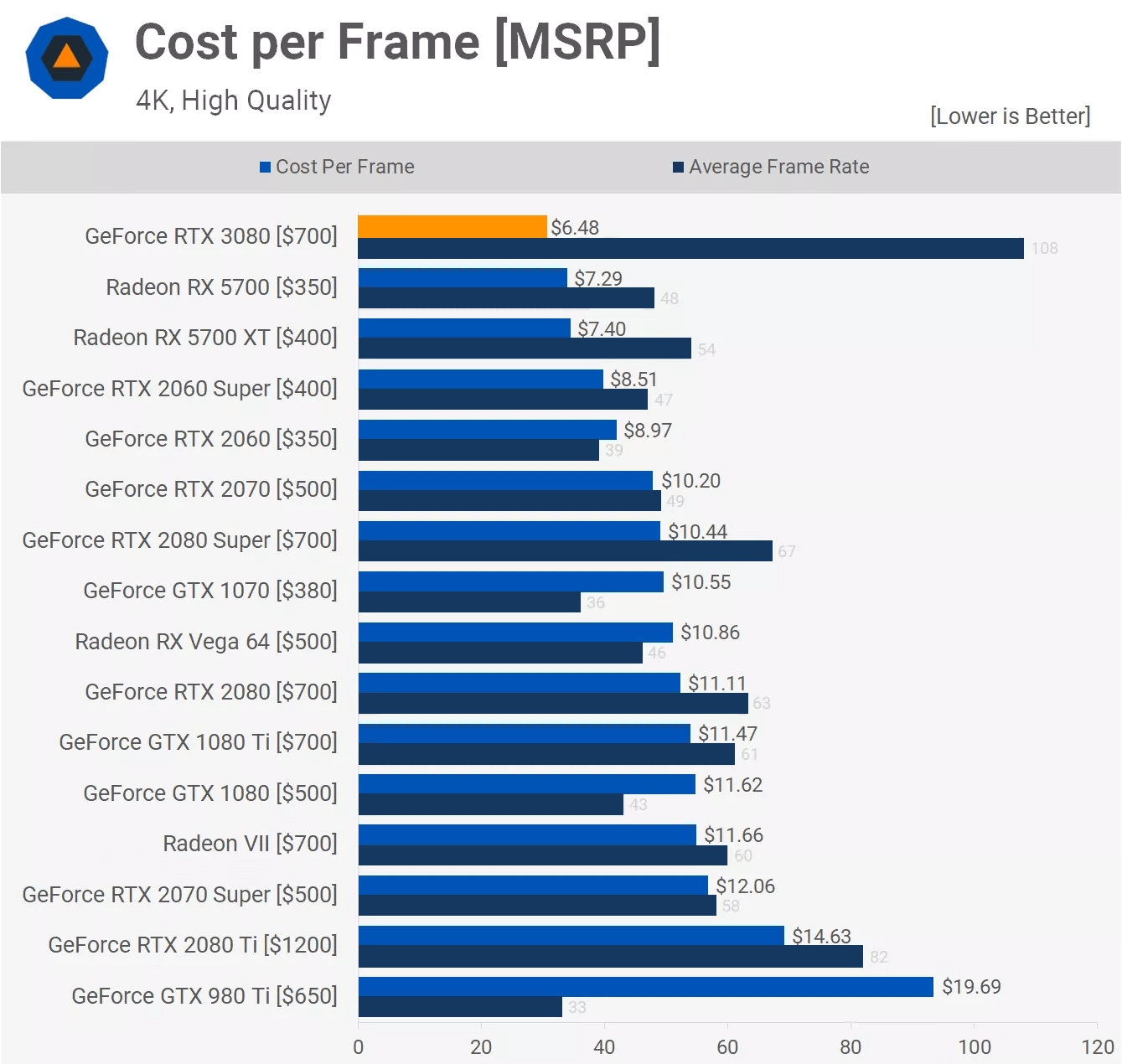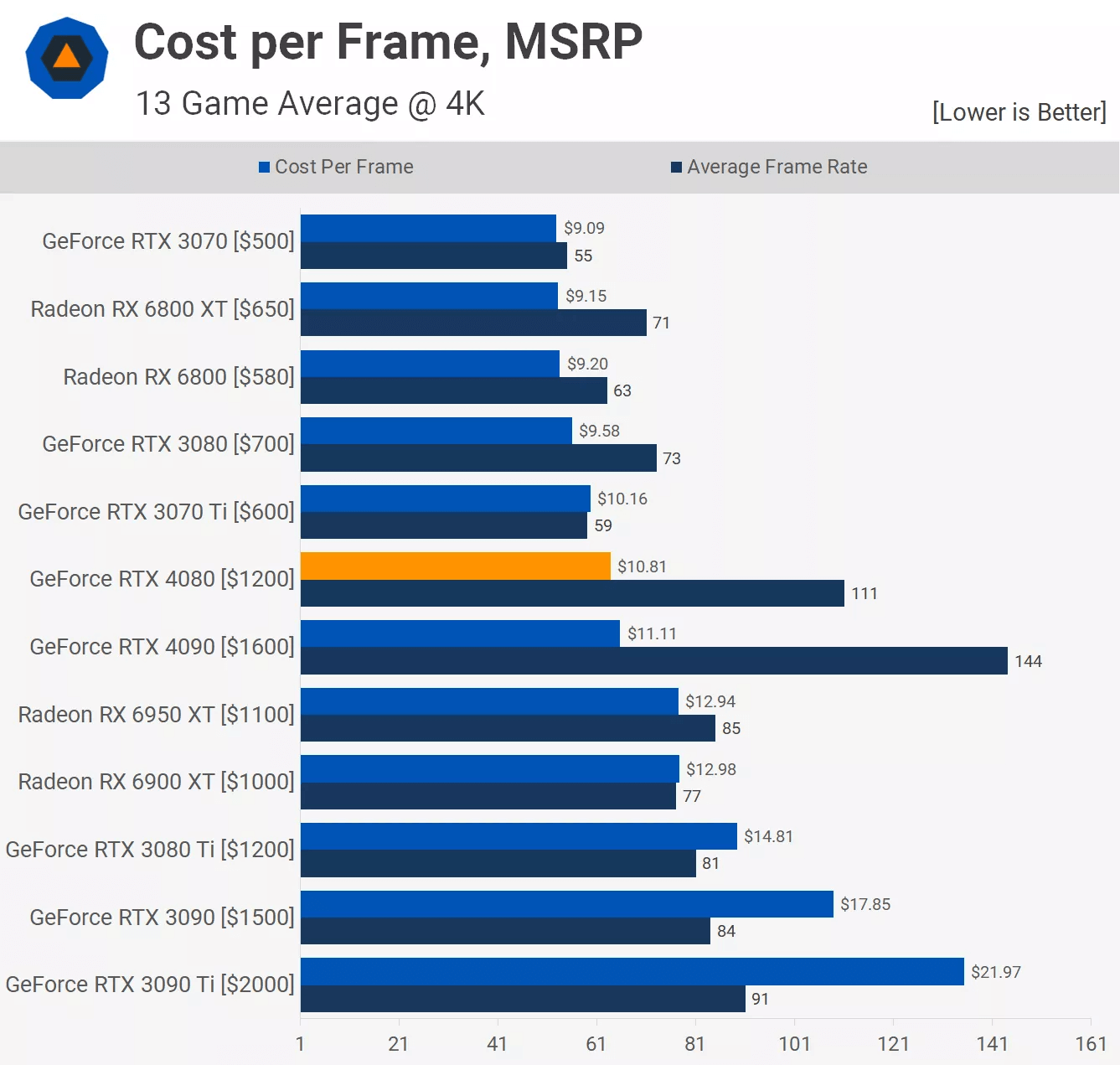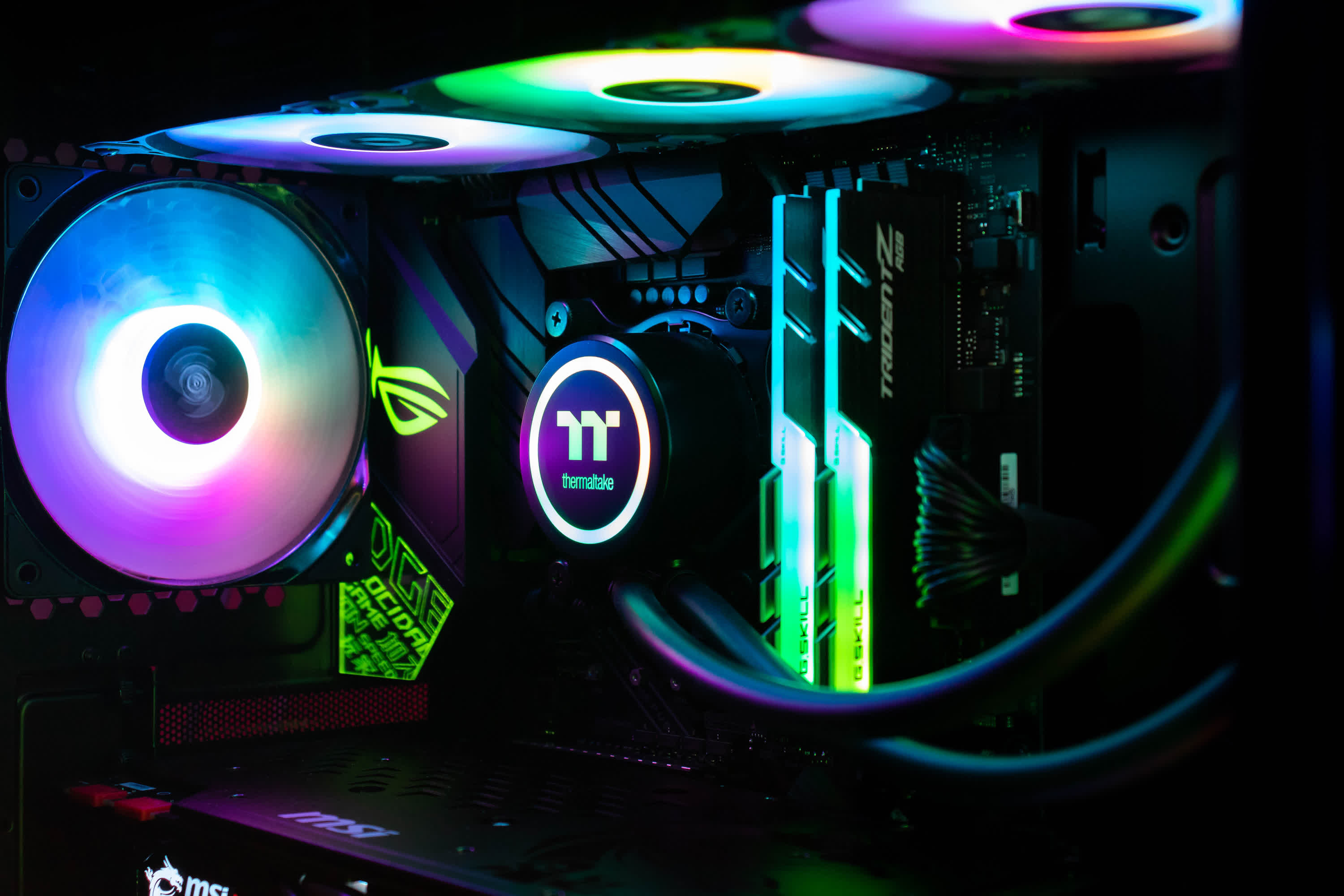Earlier in the week, we were discussing why building a new gaming PC right now isn't a bad idea, as most PC components are very competitively priced. The challenge, of course, is sourcing graphics cards, but options remain available, and for those starting from scratch, these options can certainly get you up and gaming. But what if you want to upgrade an existing gaming PC? What are the options, and do they make sense?
The big problem with the current generation of AMD and Nvidia GPUs is that they don't move the needle forward, at least not in a meaningful way. By this, we mean that the Radeon 7000 series offers a minimal improvement in terms of cost per frame over the RX 6000 series. Similarly, the GeForce 40 series shows little advancement compared to the previous 30 series.
So if you already own a 2+ year-old GeForce 30 or Radeon 6000 series graphics card, there's little appeal in this latest generation at the same price point. For example, if you managed to purchase an RTX 3060 Ti for $400, upgrading in 2023 within the same budget would afford you the RTX 4060 Ti, but you'd only be getting less than a 10% improvement on average. In fact, the uplift is just 5% at 1440p for the same $400.
Now, compare this to the 42% increase we saw when transitioning from the $400 RTX 2060 Super to the RTX 3060 Ti, and you begin to understand how disappointing this latest GPU generation is for consumers. Realistically, for Nvidia to justify calling the RTX 4060 Ti an "RTX 4060 Ti" and not an RTX 4050 Ti, it would have to offer at least a 30% performance boost on average compared to the RTX 3060 Ti, which it clearly doesn't.
For current owners of previous-gen GPUs to enhance their potentially 2+ year-old gaming system, they'd need to invest more than they originally did. Therefore, RTX 3060 Ti owners wouldn't be spending $400 again, but rather $600 for an RTX 4070, which provides an almost 40% performance boost. This approach is part of Nvidia's strategy to upsell its customers.
Thing is, if you wanted ~40% more performance while spending 50% more, you could have achieved that with the previous generation just as well, allowing you to enjoy that investment for 2+ years longer, which is a significant consideration.
Granted, previous generation GPUs were notoriously difficult to purchase for nearly two years after their release, a direct result of the cryptocurrency boom. This situation is what AMD and Nvidia are leveraging, partially due to an oversupply of previous generation parts and partially to continue reaping high profit margins. The latter is a strong motivator for profit-driven corporations.
Interestingly, profit margins are up, and both AMD and Nvidia are earning more per unit. While inflation and manufacturing costs have increased, both companies have offset this by charging you more while offering less, a fact worth pondering.
Returning to the upgrade discussion, some might argue that no one upgrades every generation, and that's simply not true. But we'll admit that not everyone does, and many gamers will wait at least two generations before pulling the trigger. However, this argument doesn't alter the scenario much. Whether you're upgrading from an RTX 2060 Super or an RTX 3060 Ti, you're still confronted with the same dismal upgrade options. Yes, the RTX 4060 Ti is 50% faster than the 2060 Super, but after 4 years, that's a rather weak uplift, particularly given it still only has 8GB of VRAM.
Moreover, if RTX 2060 Super owners contemplated an RTX 3060 Ti upgrade around the end of 2020 for a 40% performance increase and decided, "No, we'll hold out for a few more years," they're now stuck with the 4060 Ti, which is only 5% faster and doesn't even increase the VRAM capacity.
Given that there's no compelling reason to upgrade to the 4060 Ti, you would likely continue to wait or fall into Nvidia's trap of being upsold to an RTX 4070 for a real performance uplift and an increase in VRAM.
If you look back even further, sticking with our $400 price point example means you're currently using a GTX 1070, a product that's now 7 years old. It's also worth noting that the GeForce 20 series was somewhat underwhelming in terms of value. That was the generation when Nvidia attempted to market the (bad) initial release of DLSS and practically non-existent game support for ray tracing to gamers. However, the RTX 2060 Super was still around 30% faster than the GTX 1070 for rasterization performance. So, disappointing as the GeForce 20 series was, it was actually better than the 40 series we have today.
If you passed on the 20 series, we'd have to surmise that the 90% increase the RTX 3060 Ti offered over the GTX 1070 at the same price point was enough to entice you. And if not, we don't see the 4060 Ti doing the job, given that it still has the same 8GB VRAM buffer.
In essence, if you were planning to upgrade from a GPU that's now a generation or two old for roughly the same price, you would have been better off doing so 1-2 years ago, or instead continue to wait for another year or two. In almost every scenario upgrading right now, at the same price point you targeted previously, is almost pointless and if you really want to receive an upgrade, it's going to be a lot more expensive.
In almost every scenario upgrading right now, at the same price point you targeted previously, is almost pointless and if you really want to receive an upgrade, it's going to be a lot more expensive.
And this right here is the issue faced by those of you wanting to upgrade, and it's why there's a difference between building a new gaming PC in 2023 and upgrading. Those building a new gaming PC on a budget can purchase a Radeon RX 6600 for just $180, which is a significant performance upgrade over nothing.
The Radeon 6700 XT is also a viable option and it's typically what we recommend for new system builders. Alternatively, there's the RTX 4060, though that's a bit of a stretch.
However, if you already own a gaming PC, you're likely hoping for a 40-50% performance uplift for roughly the same amount you spent initially. The only GPU providing that is the GeForce RTX 4090, as it's on average 60% faster than the 3090 and 3090 Ti while costing only 7% more than the 3090 and 20% less than the 3090 Ti.
However, those previous-gen RTX 3090 flagship parts were universally deemed overpriced by reviewers since they offered around 10% more performance than the RTX 3080 for more than double the price. This is where the new pricing structure becomes evident. The RTX 4090 might be twice as fast as the RTX 3080, but it also costs twice as much, and this price-to-performance ratio extends throughout the GeForce 40 series.
For example, the RTX 4080 costs 50% more than the RTX 3080 for 50% more performance. While the RTX 4070 costs 20% more than the RTX 3070 for 25% more performance, the 4060 Ti, as we've already discussed, costs the same $400 as the 3060 Ti, but you're only gaining 5% more performance.
Another way to illustrate just how disappointing this generation is involves a cost-per-frame analysis, considering just the MSRP, which for this generation is actually a best-case scenario given the ample supply of previous generation models.
But the crux of the matter is, if we review our RTX 3080 day-one review data, we see that it outperformed even the best value mid-range offerings of the previous generation. With the RTX 3080, you were getting a better cost per frame ratio than the Radeon 5700 and RTX 2060 Super.
The RTX 4080, on the other hand, paints a very different picture. It's worse value in terms of cost per frame when compared to previous generation equivalents, like the RTX 3070 Ti, making it much worse value than the RTX 3080. So while the RTX 3080 offered a 42% reduction in cost per frame when compared to the RTX 2080, the RTX 4080 is actually 13% more expensive per frame when compared to the 3080.
So where's the incentive to upgrade? Unless you're willing to spend more money than you did originally, there isn't one, as there's no extra performance to be gained.
So where's the incentive to upgrade? Unless you're willing to spend more money than you did originally, there isn't one, as there's no extra performance to be gained. Not only that, but if you've held out this long, you might as well continue to do so in the hope that the Radeon 8000 and GeForce 50 series will deliver.
On that note, leaked information from Nvidia has been making rounds recently, suggesting that the company won't release the GeForce 50 series until 2025, which we find somewhat surprising. Typically, new architectures are released every 2 years, which would suggest the RTX 50 series should arrive in late 2024. However, early 2025 could indicate just a 3-4 month delay.
It's hard to say how accurate the leaked roadmap is, and we find it hard to believe that Nvidia would risk letting AMD release their next-generation Radeon GPUs first. Whatever the case, it seems like a sound strategy to hint at a 2025 release now rather than 2024. Tech media might report this as a major delay to their readers, leading them to believe that the next-gen GPUs are much further away than expected. This might just push consumers to purchase a 40 series GPU now rather than wait for what currently sounds like more than a year and a half.
Realistically, we should only be about a year away from next-gen GPUs, so our advice would be to hang in there, especially if that's what you've been doing. We genuinely don't think AMD or Nvidia can afford a repeat of this generation's performance, especially on the gaming front, and this will be particularly true if AI demand softens over the next year.
As a side note, we've primarily focused on Nvidia hardware in this piece. This isn't because we favor GeForce GPUs or, conversely, because we're trying to give Nvidia a hard time, but rather because Nvidia has released more current-generation GPUs and their products are generally more popular. However, let's be clear: AMD is underperforming every bit as much as Nvidia in this latest generation. There's no favorites here; we're equally disappointed with both companies.
Moving past GPUs, if you're in need of a CPU or platform upgrade, now is as good a time as any to take that step. It's also an excellent time to enhance the memory or storage capacity of your PC, as DRAM and NAND flash prices have plummeted over the past year.
Sadly though, unless your system is heavily CPU-limited, upgrading these components won't necessarily boost your gaming performance, which is why gamers typically get most excited about GPU upgrades.
For now, the best course of action may be inaction. This could signal AMD and Nvidia that improvements are necessary for the next generation of gaming hardware. Of course, if you have to upgrade, there are options, but unfortunately, you'll likely have to spend more than you'd prefer. Here's hoping for improvements in the not too distant future. We'll leave it at that.
Masthead credit: Ella Don
